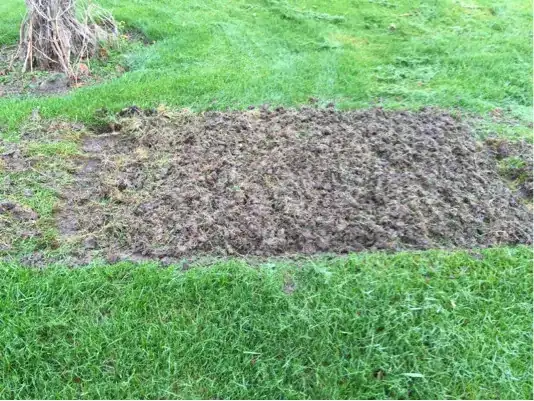I have a 4' (1.2m) three point tractor roto-tiller which I've been using to prepare garden areas this year. I noticed that the tiller always moves soil backwards, and when at the end of the section it leaves a trench, as can be seen in the picture.

The previous owners had a large garden, and I can tell the direction they always tilled in because they've created a ridge where they start and there's a significant dip where they ended. I'm working on reversing that to flatten the area better and avoid the mush in the low level area, but I'd like to avoid doing this myself.
Is there a technique I can use when tilling that will leave soil in the area where I intend to stop tilling?
I've tried lifting the tiller while still spinning, stopping right when I get to the end, and a few other things, but I'm still not leaving sufficient soil at the end. The closest I've come is slowly raising the tiller over the last several feet of the run. Still not great as it's tricky to perform, and leaves that section poorly tilled, all while not completely eliminating the trench/lack of soil.
Will I simply have to live with it as a consequence of the tiller I have, and move the soil by hand each time I use it?